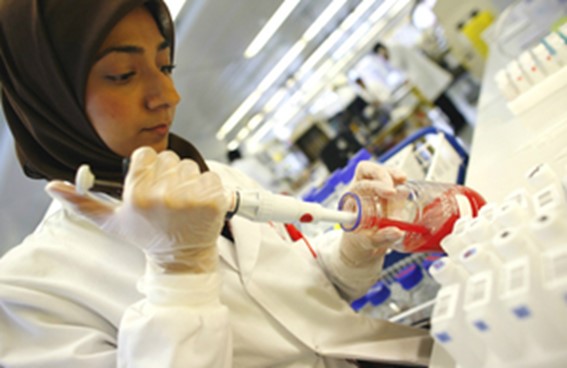Making health facilities “fit-for-purpose” in Sierra Leone
It is a politically unpalatable fact that resources needed to address the health of a country’s population are always inadequate and hence affect efficiency and equity in healthcare delivery. This is demonstrated in the bad shape of our health facilities, shortage of skilled professionals and the frequent stockouts of essential drugs and supplies. These combined, have been the factors for the unwanted deaths and disabilities in our population; and especially in the vulnerable groups of women and children.
A political decision was made in 2010 to provide Free Health Care (FHC) services to these groups in order to improve on maternal and infant mortality indices and above all, to avert some of the uncalled for deaths due to financial barriers to accessing health services. This scheme for pregnant and lactating women and their children. is also pregnant with opportunities. It is a demand-focus initiative but has also provided support to the supply-side with increase in salaries and lately the Performance-Based Financing (PBF) among others. The PBF is one of the strategies for the implementation of the FHC scheme by ensuring a clear link between financial resources and the MDG’s outcomes. The performance-based financing mechanism funds healthcare service providers according to the outputs (healthcare service provision) or outcomes (health status of the target population) that they provide. The general objective of the PBF system is to help change the behaviour of health providers at facility level for them to deliver more quality services and to increase their productivity under the free health care policy.
The Reproductive and Child Health Directorate (RCHD), which was created in 2008 has been in the fore in the management of the FHC scheme. This very important directorate in the Ministry of Health & Sanitation (MOHS) is tasked to generate policies, provide supervision, monitoring and evaluation and coordinate all RCH activities related to reducing maternal morbidity and mortality within the (MOHS) RCH framework. It is headed by the erudite, dynamic and innovative Director – Dr SAS Kargbo. A man who, before being called upon to head this directorate has carved a niche for himself as DMO in the Koinadugu district; where he creatively employed pro-poor strategies to address issues of RCH in the most access challenged district in the country.
At the RCHD, he is working assiduously and synergistically with other directorates, programmes and partners, trying to reverse the unacceptably high maternal and infant mortality indices, using different approaches.
The RCHD believes that, providing FHC to these vulnerable groups is not enough but should ensure quality service delivery is provided, and our staffs work in a conducive environment with the required tools and competence. The MOHS identified seven requirements which became known as the ENABLERS, to be in place for the functioning of EmONC (Hospital and Community Health Centres) units and these are:
- Water and Sanitation – this calls for a 24 hour availability of safe drinking water in the facility; carried through pipes in the labour room and theatre; hand washing facilities and the availability of waste disposal using either incinerator or burial pit.
- Electricity – facilities require 24 hour availability (when needed) of power – especially in the labour room and theatre; from sources including central power, solar and generator. A back up source is also needed to fulfil this requirement.
- Referrals – this requirement is looking at two areas: transportation and communication. On transportation, there must be a 24 hour ambulance service available at the facility. On communication, there must be the possibility of 24 hour communication using cellular phones or VHF radios to call for ambulance service.
- Equipment for special procedures – important instruments are required by facilities to be able to respond to EmONC needs and ALL of them must be present at the facility. In addition, staff at such facility must be competent in performing life-saving EmONC procedures.
- Blood storage and Laboratory services – there must be a functioning laboratory (with a trained lab technician/assistant) in EmONC facilities that can do haematology, microscopy and biochemistry.
- Staffing – this requirement calls for the placement of the right and competent staff in EmONC facilities.
- Drugs and Supplies – the requirement calls for the non-stock outs of ALL 16 tracer drugs Plus IV/IM antibiotics, oxytoxics and anticonvulsants
The MOHS, through the RCHD set up a team that will be responsible for tracking progress of these ENABLERS quarterly. These teams became known as the Facility Improvement Team (FIT). The overall objective of the FIT is to assist the districts in monitoring the implementation of all ENABLERS in the targeted facilities to become EmONC certified and assuring that quality service delivery is provided.
Facilities earmarked as potential EmONC; 65 CHCs to be BEmONC and the 13 hospital as CEmONC were visited throughout 2011. Though it is yet a challenge to have an EmONC compliant unit in the country, the FIT has gone a long way in driving support from our partners who have positively responded to its requirements. The recent supply of required equipment and drugs by UNICEF, for example, to facilities – in response to findings of FIT – is improving service delivery in our health facilities. The human resource needs of our health facilities are incrementally being addressed, as seen in the recent posting of community midwives to all the BEmONC centres in the country.
The FIT is also providing a direction to district stakeholders (DHMT, Local Councils and partners) in areas to spend health sector funds, especially the RCHP funds. Further, the FIT has ignited commitment and create a spirit of competitiveness by the various districts to ensure they improve between quarterly FIT assessments by procuring and maintaining generators, solarisation of facilities, support to staff trainings and recruitment of auxiliary staff . This is making a difference in our facilities.
The FIT team is also checking that district stakeholders deliver what they promise in meeting with teams (management accountability, as well as ensuring that democratically decided actions are implemented); as well as making evidence-informed recommendations to DHMT and local councils on quality health service delivery.
Whilst at the beginning the FIT was assessing only inputs to these facilities, this has now moved to another stage where the processes are looked into, giving birth to a sub-component of FIT (referred to as FIT mentoring). This component provides on-the-job training of staff on life-saving skills and on evidence-based and pro-poor strategies in reducing maternal and infant morbidities and mortalities.
Our potential EmONC facilities are becoming Fit-for-the-purpose of delivering quality health services to not only the target groups but to all and sundry that come into contact with these centres.
With thanks to partners: Options Consultancy Services, who provide technical support to the RCHD and funds for the quarterly FIT assessments; the UN agencies (WHO, UNICEF) for the funding of the FIT mentoring exercise, among other support.
By: Alhassan Fouard Kanu
Stay with Sierra Express Media, for your trusted place in news!
© 2012, https:. All rights reserved.





